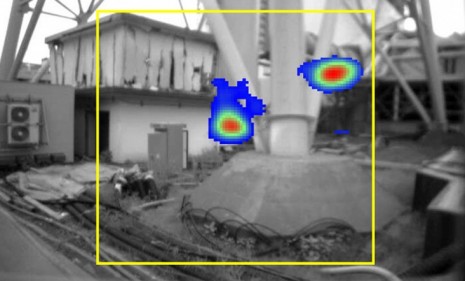Fukushima's deadly new radiation leak: The worst yet
Pockets of extremely high radiation levels are now being reported at the damaged nuclear palnt. Will Fukushima ever be safe again?

Workers at Japan's crippled Fukushima nuclear plant, severely damaged by March's earthquake and tsunami, are now reporting the most dangerous conditions ever recorded at the facility. Pockets of extremely high radiation were discovered near a ventilation chimney between two of the plant's nuclear reactors. Officials with the Tokyo Electric Power Company (TEPCO) believe the culprit is debris left behind from emergency venting procedures that were followed after the March 11 disaster. Here's what you should know:
How bad is the radiation?
Off the charts. It's reached a level of at least 10 sieverts per hour — the highest level the Geiger counters available can measure and more than 40 times the maximum radiation exposure that's allowed for the plant's workers on an annual basis.
The Week
Escape your echo chamber. Get the facts behind the news, plus analysis from multiple perspectives.

Sign up for The Week's Free Newsletters
From our morning news briefing to a weekly Good News Newsletter, get the best of The Week delivered directly to your inbox.
From our morning news briefing to a weekly Good News Newsletter, get the best of The Week delivered directly to your inbox.
Could it seriously harm a person?
Absolutely. A single dose of 10 sieverts per hour would kill a person — perhaps after "just several seconds of exposure," Reuters reports. Such lethal levels can "cause the intestines to stop functioning properly and blood vessels to leak," says Michael Freeman at Business Insider. Even 5 sieverts per hour would kill roughly 50 percent of the people exposed to it. Of course, workers cleaning up the damaged nuclear facility must use advanced protective garments and equipment to minimize any risk of radiation exposure.
Will the nuclear plant ever be cleaned up?
It's possible, but even the first step of containing radioactive debris is expected to take several years. Contaminated water, soil, and building material "have to be contained by some mechanism, and then removed to various storage sites so that they can be properly managed over what will be decades," says radiation expert Peter Burns, as quoted by the Australian Broadcast Corp.
A free daily email with the biggest news stories of the day – and the best features from TheWeek.com
Sources: Australian Broadcasting Corp., Bloomberg News, Business Insider, Reuters
-
 Political cartoons for January 4
Political cartoons for January 4Cartoons Sunday's political cartoons include a resolution to learn a new language, and new names in Hades and on battleships
-
 The ultimate films of 2025 by genre
The ultimate films of 2025 by genreThe Week Recommends From comedies to thrillers, documentaries to animations, 2025 featured some unforgettable film moments
-
 Political cartoons for January 3
Political cartoons for January 3Cartoons Saturday's political cartoons include citizen journalists, self-reflective AI, and Donald Trump's transparency